“Things are going badly because sick consciousness has a vested
interest right now in *not* recovering from its sickness.This is why a tainted society has invented psychiatry to defend
itself against the investigations of certain superior intellects
whose faculties of divination would be troublesome.No, van Gogh was not mad, but his paintings were bursts of Greek
fire, atomic bombs, whose angle of vision would have been capable
of seriously upsetting the spectral conformity of the
bourgeoisie.In comparison with the lucidity of van Gogh, psychiatry is no
better than a den of apes who are themselves obsessed and
persecuted and who possess nothing to mitigate the most appalling
states of anguish and human suffocation but a ridiculous
terminology. To a man, this whole gang of respected scoundrels
and patented quacks are all erotomaniacs.”
Van Gogh, the Man Suicided by Society
by Antonin Artaud (1947)
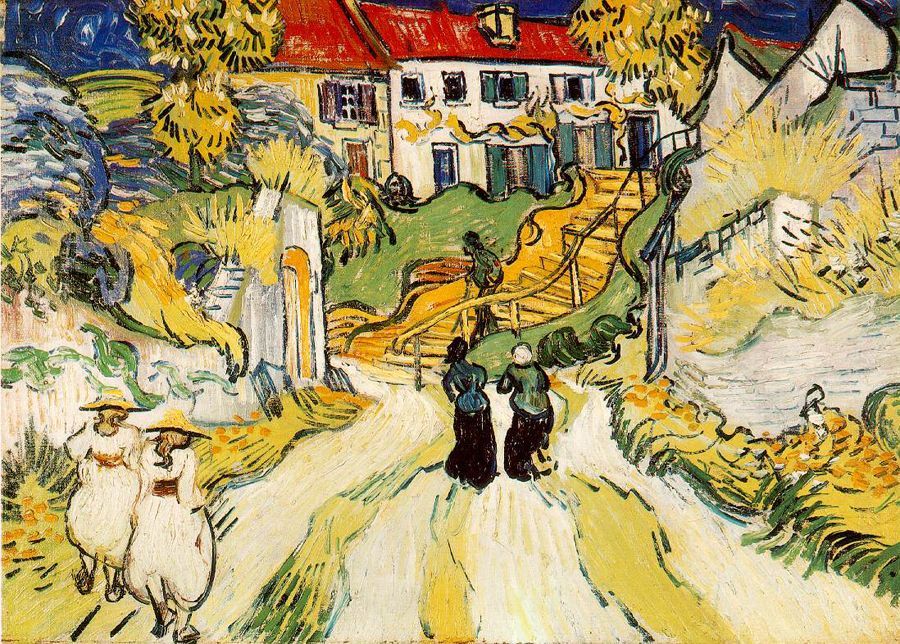
"Adeline Ravoux: "On the return, Theo, Tom, Dr. Gachet and the latter's son, Paul, who may have then been sixteen, accompanied Father. They entered "the painters room " where the coffin left from and where the canvases were on display. Theo, wanting to thank those that had helped his brother, offered them to take, in memory, some canvases of the departed artist. Father was content with my portrait and the Town Hall of Auvers that M. Vincent had given him when he was alive. When the proposal was made to Dr. Gachet, the former chose many canvases and passed them to his son Paul: "Roulez Coco", telling him to make a parcel."
Vincent went out right after lunch, not his usual custom, and had still not returned by sunset. About none o’clock the innkeeper and his family were on the terrace when Vincent appeared, clutching his stomach. Madame Ravoux asked if he’d had some problem. “No,” he replied with some difficulty, but I have “…” He didn’t finish the sentence, but went upstairs to his room. Ravoux, worried, followed him and, through the door, heard groans. He went in and found Vincent curled up on the bed. Vincent lifted his shirt and Ravoux could see a small wound by the heart. “What have you done?” he cried. “I have tried to kill myself, I only hope this time I’ve succeeded. (Ravoux` testimony)
It emerged that Vincent had gone to the wheat field where he liked to paint, behind the château of Gosselin, the Parisian. It’s more than half a kilometre from the inn, up a hill. He leaned his easel against a haystack and then walked behind the château. The popular theory is that shot himself — using a revolver (according to Adeline Ravoux) that Ravoux (or possibly Gachet) had loaned him that morning to scare off the crows pestering him while he painted — and then collapsed, Ravoux supposed, only to be revived by the evening’s cool, he headed back to the inn. The origin of the gun has always remained a mystery. Knowing Vincent’s state, who would give him a pistol? Could he have been shot?
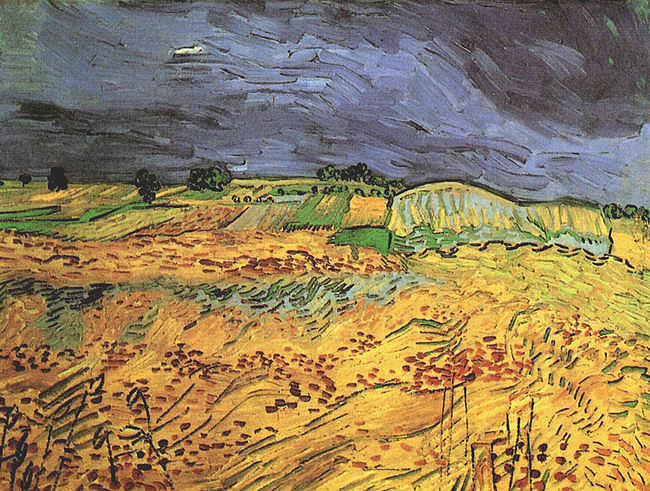
" Theo arrived by train by mid-afternoon and ran from the station to the inn. He immediately joined his brother and remained at his side. "I found him somewhat better than I expected," Theo wrote to his wife. The siblings spoke at some length, Theo urging him on but being spurned with the words, "The sadness will last forever." Then Vincent lapsed into a coma. They said the last words he uttered were, "I wish I could pass away like this."
According to the former director of the Metropolitan Museum of Art, Thomas Hoving , he didn’t commit suicide, but fell against a shotgun which accidently discharged. If Vincent had committed suicide he probably had shot in his head, not in his stomach or chest. A theory that Vincent was murdered, but covered the offender, is possible, too. If he committed suicide, there has to be a weapon, but Adeline Ravoux says in her memoirs that the weapon was never found. So somebody took the weapon and that is suspicious.
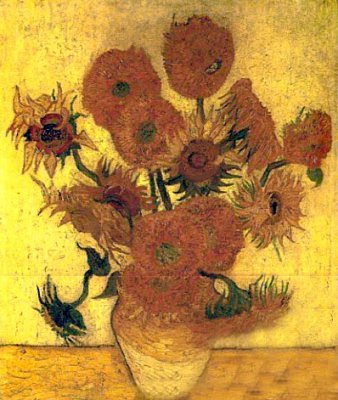
"The most controversial of all of Vincent van Gogh’s paintings has to be Yasuda’s Sunflowers. Sold in 1987 for $39.9 million dollars, art historians question it’s authenticity for many reasons. The most telling of all is that its’ provenance can be traced back to a dealer known for creating forged van Gogh’s. This is only one example of the many forged and fake van Gogh’s on the market. "
If one person is a possible suspect, we need to mention Dr. Paul Gachet. Vincent was getting much better in Auvers, everything was going forwards, he sold his first painting (The Red Vine), also got a very positive review in a Paris art paper, by the art critic Albert Aurier. So the context for suicide is not obvious. Also, Vincent did not own a gun. Apparently, ten yea
arlier, the Gachet family was implicated in a murder, but never formally charged….The end of Vincent Van Gogh was very strange. At the same time as brother Theo, was teetering financially at the edge of ruin; at the tipping point of being unable to continue supporting Vincent, his doctor Paul-Ferdinand Gachet, the other anchor of his life, had abandoned him. Vincent’s final letter to Theo: “Now about Dr. Gachet. I went to see him the day before yesterday. I did not find him in. … I think we must not count on Dr. Gachet at all. First of all, he is sicker than I am, I think, or shall we just say as much,so that’s that. Now when one blind man leads another blind man, don’t they both fall into the ditch?” Thus, the friend who had understood him perfectly, who had started him working again, was now a blind man who could not find his way, and who threatened to drag Vincent down with him.
Theo’s wife Jo, had written Vincent, telling him that Theo’s employment problem had subsided, and a great weight had been lifted for Vincent. Vincent now went back to work, cranking out more sweeping landscapes , as well as the flag covered Auvers town hall on July 14, and his final canvas, “Crows Over a Wheatfield”.
… Someone went to get Dr. Gachet who had just returned from a day of fishing with his son on the Oise River. He arrived with his emergency medical bag and, being an advocate of electric shock treatment, his little electric coil. Gachet examined Vincent’s wound by candlelight. He saw that Vincent had shot himself too low and too far to the side to touch the heart. The wound, at the edge of the left side of his rib cage, formed a small, dark red circle, surrounded by a purple halo. A thin stream of blood came from it. No vital organ seemed to be affected. The bullet appeared to have stopped somewhere in Vincent’s back, probably near the spinal column.
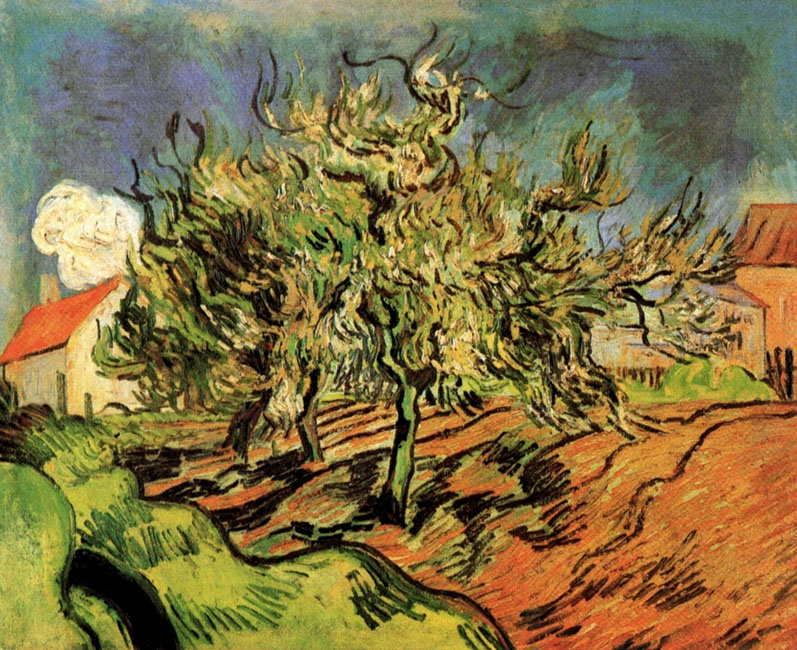
"Did Gachet and his son create a small oeuvre of forged van Gogh paintings? We many never know for sure, but all evidence suggest that Vincent’s final works are most likely forgeries. Otto Wacker Otto Wacker (1898-1970) was a German art dealer who became famous for commissioning and selling forgeries of paintings of Vincent van Gogh. Otto Wacker became an art dealer in 1925 after various false starts in other professions. He developed a reputation for reliability in the art field. The fraudulent van Goghs were probably the work of his brother, the painter and restorer Leonhard Wacker. Wacker managed to convince prominent van Gogh experts Jacob Baart de la Faille, Hendrik P. Bremmer, Julius Meier-Graefe and Hans Rosenhagen that the paintings he was selling were genuine..."
Vincent, unlike a man suffering from a serious chest wound, did not seem to be in a state of shock. He was lucid and composed, sat up in bed, and asked if he could smoke. pointing to his pipe and tobacco in a pocket of his blue blouse. It was out of the question for Dr. Gachet to extract the bullet. He had only candlelight to operate by, and surgery of the thorax was, in any case, fairly crude. The obvious thing was hospitalize Vincent to prevent him from doing further damage to himself. The town of Pointoise, which was ten kilometers away, had a hospital; but Gachet did not do the obvious thing. After dressing the wound, he left Vincent in an airless room. Anton Hirschig , a Dutch painter who was also staying at the boarding house, visited Vincent’s deathbed and reported, “It was sweltering hot up there under the roof.”
Later that night, two gendarmes arrived to question Vincent, who, according to madame Ravine, refused to respond to the officers. The gendarmes were unable to learn where Vincent had gone to shoot himself or how he had come into possession of a gun. Gachet eventually reached Theo despite Vincent not giving him the address; and the brother arrived the next morning. Vincent told him, “Don’t cry, I did it for the good of all of us”. When he saw Vincent sitting up in bed calmly puffing on his pipe, Theo hoped he would recover. Thus, no more was done to save Vincent, who died in one-thirty in the morning of July 29, some twenty-eight and a half hours after Dr. Gachet had been to see him. He was thirty-seven years old.
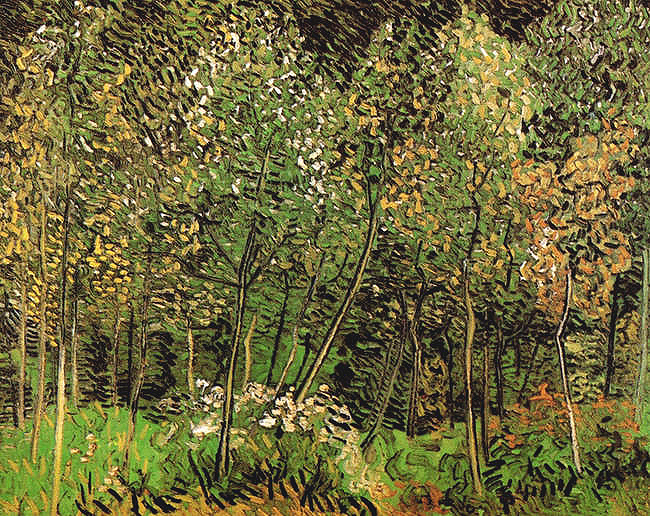
"The trial against Wacker began in April 6, 1932. Vincent Wilhelm van Gogh, nephew of the painter, gave the first evidence at the trial and stated that family records did not include any Russian who would have purchased any paintings. De La Faille, on the other hand, had changed his mind once again and claimed that 5 of the paintings were genuine. During the trial, various experts did not come to full agreement on what paintings were authentic (and the argument was to continue in some circles for years afterwards). Bremmer argued that at least 9 paintings were genuine. Meier-Grafe admitted his mistake and even that the expert opinion could be fallible. Hans Rosenhagen said that 14 of the works were inferior but genuine...."
“While it is true that Vincent and his brother Theo probably paid Dr. Gachet for his “services” with paintings, it seems more and more likely that he did not hesitate to give himself a bonus shortly after Vincent died. Gachet may have had assistance from his son in painting van Gogh forgeries, and was also accused of strange behavior. To further drive home this point, Gachet fancied himself an art collector and even somewhat an artist. Gachet’s son, Paul, was a teenager at the time of van Gogh’s death, and worshipped Vincent almost to the point of obsession. The younger Gachet too fancied himself an artist and after the death of his father his obsession with their personal collection of van Gogh’s deepened. He quietly sold paintings to some, while turning away many who wanted to view or photograph his paintings.
Even though Vincent was very ill, mentally and physically, towards the end of his life, his final “paintings” show less charm, less detail and less authenticity than his prior work. Gachet and his son would have had full access to his materials including paints, canvases and samples of his work to copy from, so the possibility that Gachet created numerous fakes is quite great.”





 COMMENTS
COMMENTS